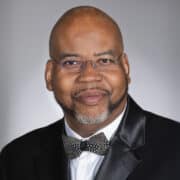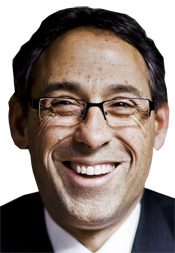Too much technology can cripple an organization, especially if it is outdated and expensive. That reality prompted the State of Ohio to modernize its tangle of competing systems into an efficient 21st century powerhouse. “We recognized we couldn’t continue to do business from a state perspective the way we were doing it,” says Stu Davis, the state’s CIO. “Each agency had their own IT shop, they were building their own solutions, and there was a lot of duplication and redundancy.”
The tech landscape was daunting. Ohio’s 26 cabinet agencies and 70 boards and commissions were operating with 14 networks based in more than 30 data centers; more than 5,500 servers, some virtualized and many still physical; 19 e-mail systems; and almost half of the state’s 53,000 employees on a 1980s-era Centrex call-center system. Moreover, the state was spending $830 million a year to manage, operate, and maintain these systems.
Based in Ohio’s Department of Administrative Services Office of Information Technology, Davis assembled a multiagency IT transformation team to bring change to nine functional areas: network operations, data-center operations, infrastructure applications, enterprise applications, financial/cost recovery, procurement, workforce transformation, security, and business-relationship management.
Team members were recruited from the “best of the best” in IT categories across Ohio, Davis says. “We looked at the key folks that were out there, the ones that were vocal and we knew would give us an unvarnished, honest answer.”
“The assembly of this team was not without considerable sacrifice from [other] agencies,” adds Tom Croyle, Ohio’s chief technology officer. “These people were chosen for their reputation for what they could deliver at their agencies.”
The far-reaching project had support from the top. “Our governor is very focused on getting us into the 21st century on a variety of fronts,” Davis says. “We have an administration and a cabinet that understand that we need to change the way that we’ve done business in the past, and we have great support from the cabinet agency directors and the lead CIOs in those agencies.” There was also crucial support from Ohio’s Office of Budget Management and the Ohio Board of Regents of the institutions of higher education.
The IT transformation started with e-mail. “We now have 77 of the 90 or so agencies on a single Exchange platform today,” Davis says. “We went from somewhere in the neighborhood of 14,000 accounts we manage from a central hub to just over 50,000.”
Next came the phone system, spearheaded by the CIO for the Department of Health, which had voice-over-Internet protocol already in place. “The lead … made sure we got what we needed from a state perspective, and understood the impact on individual agencies,” Davis says. “We signed that contract in late June or early July, and now we’re moving agencies one-by-one over to the hosted voice-over-IP solution.”
Davis’s own department has been the first to migrate to an identity-management system, wherein individuals can have a single presence on shared services, meaning they won’t have to type in a new user name and new password for each individual service.
Whatever the technological improvement, the ongoing process is leveraging the expertise of certain agencies to bring others up to speed. For example, after the Ohio Environmental Protection Agency migrated from Groupwise to the central Exchange service, representatives from EPA helped the Department of Public Safety make the same change.
Davis admits there was some skepticism at first. “When we talked to the agencies and to the multiagency CIO advisory council about some initiatives that we wanted to do, they said, ‘Maybe you ought to see if you can get one right and then we’ll think about it,’” he says, noting that the first project, e-mail, made believers out of them. “The response grew into, ‘Wow, if they can actually do that, and they actually engaged us, and they leveraged the expertise across the state like they said they were going to, then we can look at virtual storage and different approaches to some of the other things that we have.’”
A lot of the success was due to attitude. “We’re not in an ivory tower trying to decide how we’re going to consolidate the technical infrastructure,” Croyle says. “We’ve reached out to the customer agencies and asked the people who work there to help us plan how that’s going to go.”
Davis and his staff are realistic about what it will take to get everything changed. “It took 20 years to get here, and we’re trying to fix this over 5–10 years,” he says. “A big part of this effort is the culture and making sure everyone has a sense of urgency and understands that if we don’t do it, somebody else will.”














